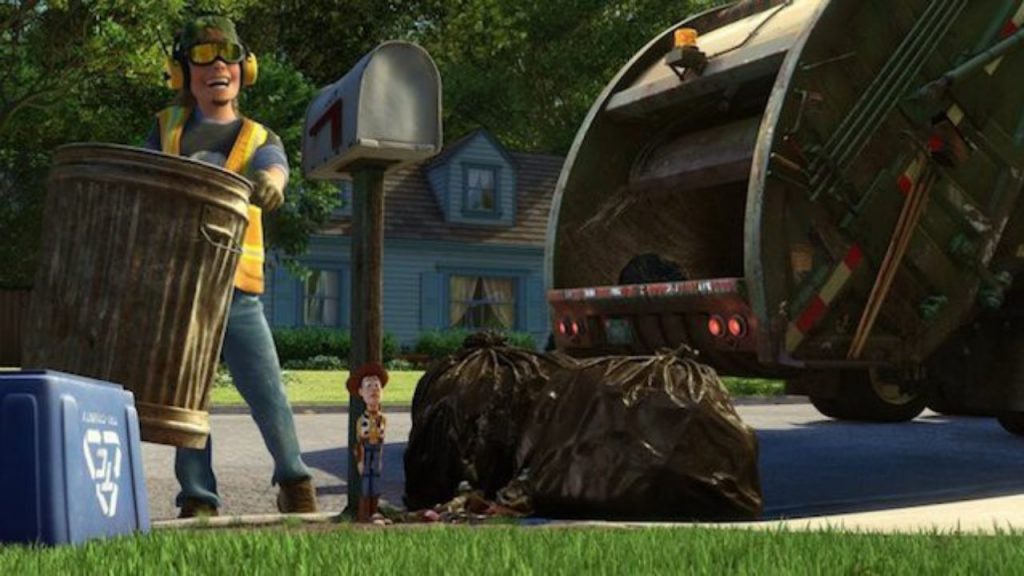By Mike O’Brien
At first glance, Toy Story is a heart-warming tale of camaraderie, breathing the same life into its toys as our imaginations did in the days of yore. But it is our collective failure as a society to recognise Toy Story for what it truly is: an indictment of our corrupt, celebrity-worshipping media environment whose sympathy for narcissists perjures justice.
Early in Toy Story, we discover that whenever a human enters the room, the toys freeze and ÔÇÿplay dead’ to keep their sentience a secret. Shortly after, they limber up, emerging from their performance to return to their vivid selves. But for Woody, this is where the performance begins. His gaunt, inanimate gaze is the truest reflection of the morally absent psychopath underneath that drives his actions throughout the film.
When the charismatic Buzz Lightyear arrives, he proves instantly popular among the toy society. Within minutes, Woody, consumed by narcissistic rage, attempts vehicular manslaughter. When this evolves into a near-fatal defenestration, Woody is apprehended by fifteen US military soldiers and faces a summary execution before being pardoned by Andy, the executive head of state.

When Woody discovers that Buzz is alive, his immediate instinct is not to reconcile or apologise, but a calculated and exasperated performance of relief, which he deftly manoeuvres into the suggestion that Buzz should exonerate him. Woody expresses no remorse nor concern for his attempted murder; rather, he instinctively defends his public image, the clear behaviour of a psychotic narcissist. Confessedly, Buzz escalates matters into a physical conflict, but as Buzz is an officer of intergalactic law, this should be considered a judicial arrest. When Woody’s ruse fails, his killer instinct emerges once again when, despite a break in the conflict, he not only attempts to beat Buzz to death, but gaslights him into believing that he is not a real officer of the law. This claim is debunked in Toy Story 2, in which Buzz resists the authoritarian tyranny of Emperor Zurg.
When the two are forced to cooperate to escape an unfamiliar household, Woody claims his next victim. By revealing his sentience in a sinister and threatening manner, he traumatises Sid, a creative child prodigy in engineering. Sid creates amalgams of toys, reasonably assuming they are inanimate and cannot experience pain. Woody’s decision to psychologically torture a young boy instead of merely explaining the situation ruins his life. Sid comes to associate his engineering passion with crippling guilt, abandoning STEM education forever and pursuing a degree in journalism. This is confirmed in Toy Story 3, where he becomes an unskilled labourer in waste management.

Woody returns and faces no retribution from his community. Their collective amnesia can only be explained by the failure of our 24-hour news cycle to provide thorough and incriminating narratives of society’s most powerful. The film ends with Woody’s subservient girlfriend showering him with kisses, as he senselessly scolds Buzz one last time:
ÔÇÿOh Buzz; what could Andy possibly get that is worse than you.‘


